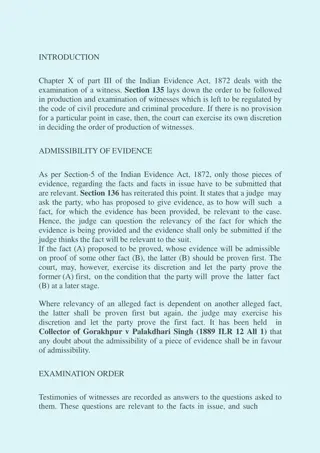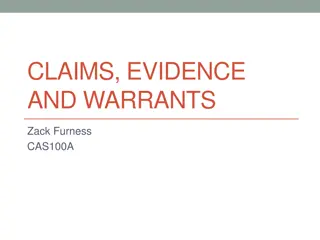
Understanding Athenian Democracy Through Epigraphic Evidence
Explore the intersection of Athenian democracy and imperialism through epigraphic evidence, showcasing how official inscriptions reflect key democratic values such as transparency, equality, and accountability. Delve into the significance of around 100,000 preserved Greek inscriptions, mostly on stone, and discover how these ancient writings shed light on the democratic principles upheld by the Athenian polis.
Download Presentation

Please find below an Image/Link to download the presentation.
The content on the website is provided AS IS for your information and personal use only. It may not be sold, licensed, or shared on other websites without obtaining consent from the author. If you encounter any issues during the download, it is possible that the publisher has removed the file from their server.
You are allowed to download the files provided on this website for personal or commercial use, subject to the condition that they are used lawfully. All files are the property of their respective owners.
The content on the website is provided AS IS for your information and personal use only. It may not be sold, licensed, or shared on other websites without obtaining consent from the author.
E N D
Presentation Transcript
Democracy and Imperialism TERM 2, LECTURE 3 DEMOCRACY SET IN STONE: EPIGRAPHIC EVIDENCE
Democracy in political thought Scattered arguments for democracy focus on equality, fairness, engagement of citizens, rule of law Anti-democratic thought built around inequality as natural and just Literature suggests general anti-democratic sentiment, but persistence of democracy proves its popularity
Epigraphic evidence Greeks wrote on stone, bronze, lead, tin, wood, pottery, papyrus c. 100,000 Greek inscriptions preserved, vast majority on stone (walls, statue bases, stelai) Majority are epitaphs & dedications State inscriptions include laws, treaties, decrees, inventories, accounts, lists of magistrates, ephebes, debtors, those eligible for military service
Key questions How did the Athenian democracy use official inscriptions? How are Athenian democracy and imperialism reflected in these inscriptions? Are these inscriptions a typically democratic phenomenon?
Democracy and epigraphy About 1/5 of surviving inscriptions are Athenian Nearly 500 decrees survive from 4th-century Athens; M.H. Hansen (1991) estimates c. 30,000 were passed Inscriptions often contain formulae appealing to democratic ideology (i.e. so that anyone who wishes can see it )
Source: C.W. Hedrick, Democracy and the Athenian epigraphical habit, Hesperia 68.3 (1999), 392
Inscriptions as a pillar of democracy Transparency & accountability Equal access to information relevant to state policy Monumentality & permanence of decisions of the demos Honorific decrees invoke competitive service to the polis
The importance of keeping records They also appoint by lot the officer called Clerk for the Prytany, who is responsible for documents, is keeper of the decrees that are passed and supervises the transcription of all other documents, and who attends the sittings of the Council. [Arist.] Ath. Pol. 54.3 Suppose someone had entered the Metroon and erased one law and then excused himself on the grounds that the city was not endangered by the loss of just this one. Would you not have killed him? I think you would have been justified in doing so, at least if you intended to save the other laws. Lysias 1.66 He made an agreement with the people and proposed the decree against himself, to be kept by the mother of the gods, who is the city's guardian of all written contracts. Dinarchus 1.87
Case closed? Valued records were in the archive, not on stone; inscriptions are monuments, not archives If inscriptions are meant to inform, why are they so lacking in critical data? If inscriptions are meant to be seen by all, why are they placed on the Acropolis/other sacred spaces? Connection democracy-epigraphy clear for 4th century but not 5th (or 6th) Athenian literacy rates unknown
Imperialism and epigraphy Athenian Tribute Lists: records of the 1/60th share dedicated to Athena Allies to subjects : open imperialism?
Decree on the settlers of Salamis (c. 501) Decided by the demos. Those in Salamis who are cleruchs shall be allowed to reside on Salamis ( ) to the Athenians to pay taxes and provide military service. But what is theirs on Salamis shall not be leased, unless a kinsman is the lessor. If someone should lease it, the lessee and the lessor shall pay a penalty, each of them ( ) to the public treasury. And the transaction shall be handled by the archon, if not, he shall be held accountable at his euthyna. Their weapons they shall furnish themselves; the cost is thirty drachmas. Having been armed the archon shall review their weapons. The Council, in the year ( )
Decrees of the democracy 1. Heading: invoking gods/audience/fortune 2. Prescript: resolved by the people , dating through magistrates in office 3. Proposal, typically verbatim 4. Amendments (if any)
Athenian decrees What standard elements can you identify? What is the decree about? Which institutions/magistrates are involved? How does it reflect the functioning of democracy? How does it reflect the values of democracy?
Athens, democracy and epigraphy Classical Athenian democracy coincides with an explosion in number of inscriptions Democracy used public monuments to commemorate Assembly decisions on all matters Epigraphic habit is certainly Athenian, but not necessarily democratic






















